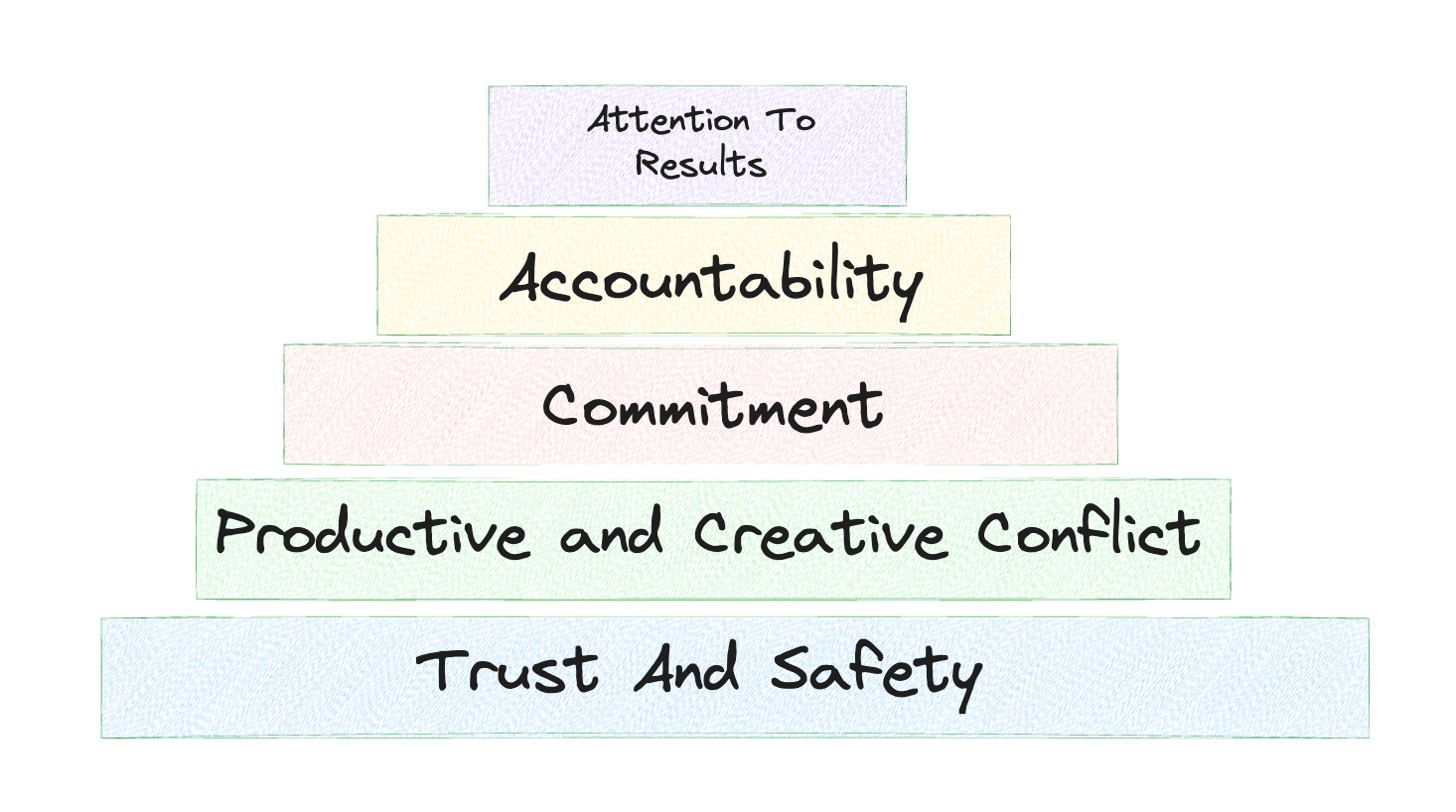
Highlights §
- Members of your team will mirror your work style, so you must embody your performance expectations. These expectations will vary from team to team, but as the group leader, you must clearly define expectations for things like effort, technical excellence, communication style, and availability, then meet these expectations yourself. (View Highlight)
- my team’s work often involved extensive communication with trading desks. An expectation I had was that our communications should be economical in their wording and leave no technical ambiguity open to the desks. By providing examples of this in my own communication, our team was able to quickly establish a reputation of excellence with our stakeholders. (View Highlight)
- On the other hand, I occasionally would, in the interest of time, implement quick-and-dirty technical fixes rather than providing a more stable long-term solution. This normalized this type of behavior, resulting in some team inefficiency over time. (View Highlight)
- • Set clear standards and expectations(and follow them yourself)
• Create templates that can be used for future communication
• Provide quickly and clearly so your team understands what is expected (View Highlight)
- It’s natural for the parts of your brain that drive work performance to disengage over the weekend break. When the new week begins, immediately seek to reorient and reengage your team. You can nicely accomplish this by hosting your weekly team meeting as early as possible on Monday morning. In this meeting, team members should publicly articulate a reflection on the previous week’s work and a plan for the upcoming week. This type of group engagement is an excellent way to warm up the team for the work cycle. Hosting it early on Monday also provides the meeting with a sense of urgency. (View Highlight)
- Clearly review the prior week, and coming week by going over tasks completed and future goals. (View Highlight)
- There is immense value in creating a publicly accessible body of writing that clearly outlines your team’s responsibilities, upcoming plans, past achievements, and culture. The act of writing these documents will clarify the reality of your team in your own mind; their consumption will clarify the reality of your team in the minds of others. (View Highlight)
- Encourage your members to become writers as well, engaging them in the creation of the documents which solidify the abstraction of “your team”. By doing so, you will reduce the amount of time spent on clarification, and improve your team’s exposure to the broader organization. (View Highlight)
- Using writing not only as a tool to communicate to external teams but also to help your team clarify and formulate their own thinking (View Highlight)
- Ensuring that your understanding of reality aligns with your team members is fundamental to maintaining a healthy relationship with your direct reports, and enables the maximum amount of growth for both parties. A great way to accomplish this is to drive these relationships with a shared document. This log should contain all information relevant to your managerial relationship: 1-1 notes, prioritization notes, performance evaluations, and feedback. (View Highlight)
- his hide-nothing pattern of management results in a more fair and trusting relationship, but can be uncomfortable as a manager because it forces you to clearly document feedback that may be difficult to give. This type of feedback presented in clear writing is extremely valuable for your report’s career growth, and the shared document provides a way to track improvement. Over time, having access to this document will make your team more comfortable, because they have access to the information you will use to review their performance. (View Highlight)
- Set-up a 1:1 notes document for you and your team members(my manager did this with me at Facebook) (View Highlight)
- Outline clear paths for growth in these documents (View Highlight)
- Being somebody with the ability to dispatch resources inevitably results in making some decisions on how they are dispatched. Your team’s general priorities will often be communicated at a higher organizational level, but you will eventually find yourself making smaller prioritization decisions with your individual team members (View Highlight)
- As a manager, it is your duty to ensure all members of your team have a deep understanding of what is the highest value use of their time, and why this usage is high value. This can sometimes be difficult for your reports to understand because they often do not have the same level of organizational context afforded to you by your communications and relationships with other managers. (View Highlight)
- Making good decisions on prioritization and communicating them clearly to your team, is a fundamental part of the team’s success. (View Highlight)
- There is only so much time in the day, and ensuring that your team is informed about what the right work is ensures they are putting efforts in the right direct (View Highlight)
- Communication has now come up several times. Meaning whether you’re dealing with prioritization or trying to set an example for your team, communication is key (View Highlight)
- Building a team that can maintain long-term high performance requires building an environment where the team members are happy. Beyond the obvious empathetic aspects, you want your team to feel good about the work they do because it will also improve their performance. Since most people crave recognition for their contributions, it is important to publicly praise your team members as they meet and exceed your expectations. (View Highlight)
